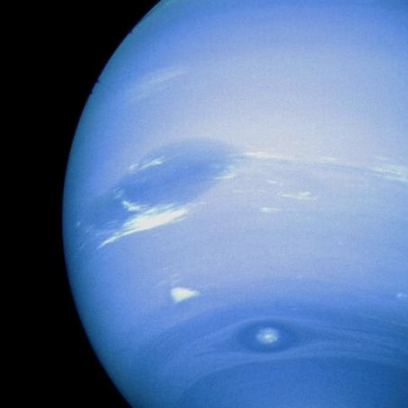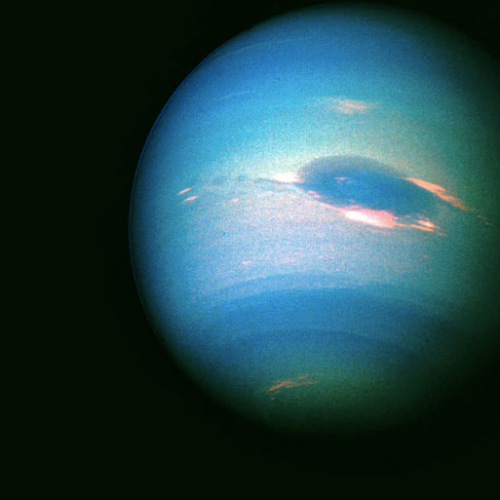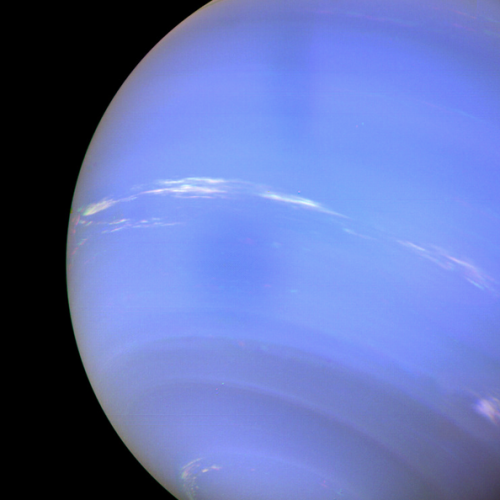What A Cool Illustration :D
What a cool illustration :D
It’s true though
WANT MORE? GET YOUR HEAD STUCK IN THE STARS AT MY BLOG!

Art by Emanuele Fais
More Posts from Acosmicgeek and Others
I’m so hype for this telescope though
They say it might be able to see back to when the first stars were born - how exciting!
Eat shit Hubble telescope
WANT MORE? GET YOUR HEAD STUCK IN THE STARS AT MY BLOG!

The launch of the James Webb Telescope – the successor of the Hubble Telescope – has been delayed until 2021 but damn it’s going to be awesome.
How do I constantly forget how beautiful the universe is?
Also, this is true, Jewels DEFINITELY aren’t as bright as stars!
WANT MORE? GET YOUR HEAD STUCK IN THE STARS AT MY BLOG!

A Stellar Jewel Box: Open Cluster NGC 290 : Jewels don’t shine this bright – only stars do. Like gems in a jewel box, though, the stars of open cluster NGC 290 glitter in a beautiful display of brightness and color. The photogenic cluster, pictured here, was captured in 2006 by the orbiting Hubble Space Telescope. Open clusters of stars are younger, contain few stars, and contain a much higher fraction of blue stars than do globular clusters of stars. NGC 290 lies about 200,000 light-years distant in a neighboring galaxy called the Small Cloud of Magellan (SMC). The open cluster contains hundreds of stars and spans about 65 light years across. NGC 290 and other open clusters are good laboratories for studying how stars of different masses evolve, since all the open cluster’s stars were born at about the same time. via NASA
Poor, poor moon :(
WANT MORE? GET YOUR HEAD STUCK IN THE STARS AT MY BLOG!

“boy, girl, time for dinner!”
Aw, now that’s a smart kitty
Also - what’s the meaning of life and death - good question. Cat please explain lol
WANT MORE? GET YOUR HEAD STUCK IN THE STARS AT MY BLOG!

Upvote me so that I can post on r/science too.
Neptune!
Mercury will always be my favorite planet (closest to the Sun, underappreciated, proved Einstein’s general relativity, among other things) but I think Neptune’s the most beautiful. Look at that hue!
WANT MORE? GET YOUR HEAD STUCK IN THE STARS AT MY BLOG!






neptune.
Omg xD
It’s true though. Do you believe in a flat Earth? Look up at the moon. See that curvature? If the Earth were flat it’d just be a straight line, running across the moon.
WANT MORE? GET YOUR HEAD STUCK IN THE STARS AT MY BLOG!

what you think? is this post right?
More nebulae!!!
WANT MORE? GET YOUR HEAD STUCK IN THE STARS AT MY BLOG!

M27: Not a Comet : While hunting for comets in the skies above 18th century France, astronomer Charles Messier diligently kept a list of the things he encountered that were definitely not comets. This is number 27 on his now famous not-a-comet list. In fact, 21st century astronomers would identify it as a planetary nebula, but it’s not a planet either, even though it may appear round and planet-like in a small telescope. Messier 27 (M27) is an excellent example of a gaseous emission nebula created as a sun-like star runs out of nuclear fuel in its core. The nebula forms as the star’s outer layers are expelled into space, with a visible glow generated by atoms excited by the dying star’s intense but invisible ultraviolet light. Known by the popular name of the Dumbbell Nebula, the beautifully symmetric interstellar gas cloud is over 2.5 light-years across and about 1,200 light-years away in the constellation Vulpecula. This impressive color composite highlights details within the well-studied central region and fainter, seldom imaged features in the nebula’s outer halo. It incorporates broad and narrowband images recorded using filters sensitive to emission from hydrogen and oxygen atoms. via NASA
That’s gorgeous!
This picture right here is why I hate light pollution
WANT MORE? GET YOUR HEAD STUCK IN THE STARS AT MY BLOG!

The Galaxy Above : Have you contemplated your home galaxy lately? If your sky looked like this, perhaps you’d contemplate it more often! The featured picture is actually a composite of two images taken last month from the same location in south Brazil and with the same camera – but a few hours apart. The person in the image – also the astrophotographer – has much to see in the Milky Way Galaxy above. The central band of our home Galaxy stretches diagonally up from the lower left. This band is dotted with spectacular sights including dark nebular filaments, bright blue stars, and red nebulas. Millions of fainter and redder stars fill in the deep Galactic background. To the lower right of the Milky Way are the colorful gas and dust clouds of Rho Ophiuchus, featuring the bright orange star Antares. On this night, just above and to the right of Antares was a bright planet Jupiter. The sky is so old and so familiar that humanity has formulated many stories about it, some of which inspired this very picture. via NASA
Ooo, that’s pretty cool
Also - a nice little teaser - we’ll be covering brown dwarfs in the next chapter of the Life of a Star!
WANT MORE? GET YOUR HEAD STUCK IN THE STARS AT MY BLOG!

ASTRONOMERS FIND JUPITER-LIKE CLOUD BANDS ON CLOSEST BROWN DWARF
A team of astronomers has discovered that the closest known brown dwarf, Luhman 16A, shows signs of cloud bands similar to those seen on Jupiter and Saturn. This is the first time scientists have used the technique of polarimetry to determine the properties of atmospheric clouds outside of the solar system, or exoclouds.
Brown dwarfs are objects heavier than planets but lighter than stars, and typically have 13 to 80 times the mass of Jupiter. Luhman 16A is part of a binary system containing a second brown dwarf, Luhman 16B. At a distance of 6.5 light-years, it’s the third closest system to our Sun after Alpha Centauri and Barnard’s Star. Both brown dwarfs weigh about 30 times as much as Jupiter.
Despite the fact that Luhman 16A and 16B have similar masses and temperatures (about 1,900°F, or 1,000°C), and presumably formed at the same time, they show markedly different weather. Luhman 16B shows no sign of stationary cloud bands, instead exhibiting evidence of more irregular, patchy clouds. Luhman 16B therefore has noticeable brightness variations as a result of its cloudy features, unlike Luhman 16A.
“Like Earth and Venus, these objects are twins with very different weather,” said Julien Girard of the Space Telescope Science Institute in Baltimore, Maryland, a member of the discovery team. “It can rain things like silicates or ammonia. It’s pretty awful weather, actually.”
The researchers used an instrument on the Very Large Telescope in Chile to study polarized light from the Luhman 16 system. Polarization is a property of light that represents the direction that the light wave oscillates. Polarized sunglasses block out one direction of polarization to reduce glare and improve contrast.
“Instead of trying to block out that glare, we’re trying to measure it,” explained lead author Max Millar-Blanchaer of the California Institute of Technology (Caltech) in Pasadena, California.
When light is reflected off of particles, such as cloud droplets, it can favor a certain angle of polarization. By measuring the preferred polarization of light from a distant system, astronomers can deduce the presence of clouds without directly resolving either brown dwarf’s cloud structure.
“Even from light-years away, we can use polarization to determine what the light encountered along its path,” added Girard.
“To determine what the light encountered on its way we compared observations against models with different properties: brown dwarf atmospheres with solid cloud decks, striped cloud bands, and even brown dwarfs that are oblate due to their fast rotation. We found that only models of atmospheres with cloud bands could match our observations of Luhman 16A,” explained Theodora Karalidi of the University of Central Florida in Orlando, Florida, a member of the discovery team.
The polarimetry technique isn’t limited to brown dwarfs. It can also be applied to exoplanets orbiting distant stars. The atmospheres of hot, gas giant exoplanets are similar to those of brown dwarfs. Although measuring a polarization signal from exoplanets will be more challenging, due to their relative faintness and proximity to their star, the information gained from brown dwarfs can potentially inform those future studies.
NASA’s upcoming James Webb Space Telescope would be able to study systems like Luhman 16 to look for signs of brightness variations in infrared light that are indicative of cloud features. NASA’s Wide Field Infrared Survey Telescope (WFIRST) will be equipped with a coronagraph instrument that can conduct polarimetry, and may be able to detect giant exoplanets in reflected light and eventual signs of clouds in their atmospheres.
IMAGE….Astronomers have found evidence for a striped pattern of clouds on the brown dwarf called Luhman 16A, as illustrated here in this artist’s concept. The bands of clouds were inferred using a technique called polarimetry, in which polarized light is measured from an astrophysical object much like polarized sunglasses are used to block out glare. This is the first time that polarimetry has been used to measure cloud patterns on a brown dwarf. The red object in the background is Luhman 16B, the partner brown dwarf to Luhman 16A. Together, this pair is the closest brown dwarf system to Earth at 6.5 light-years away. CREDITS: Caltech/R. Hurt (IPAC)
Can I go to Lake Thetis? Damn.
Florida’s got nothing on this place, I’m sorry.
WANT MORE? GET YOUR HEAD STUCK IN THE STARS AT MY BLOG!

Milky Way + Stromatolites - Lake Thetis, Western Australia
Nikon d5500 - 35mm - 9 x 13s - ISO 3200 - f/2.2
-
 designbydae liked this · 1 month ago
designbydae liked this · 1 month ago -
 pink-elefantz reblogged this · 3 months ago
pink-elefantz reblogged this · 3 months ago -
 i-used-to-be-a-dreamer liked this · 3 months ago
i-used-to-be-a-dreamer liked this · 3 months ago -
 psyhorizon reblogged this · 7 months ago
psyhorizon reblogged this · 7 months ago -
 psyhorizon liked this · 7 months ago
psyhorizon liked this · 7 months ago -
 last-starborn reblogged this · 8 months ago
last-starborn reblogged this · 8 months ago -
 moog-city liked this · 9 months ago
moog-city liked this · 9 months ago -
 enlightenedshroom liked this · 10 months ago
enlightenedshroom liked this · 10 months ago -
 onedayatafuckingtimebuddy reblogged this · 1 year ago
onedayatafuckingtimebuddy reblogged this · 1 year ago -
 raptinspace reblogged this · 1 year ago
raptinspace reblogged this · 1 year ago -
 lecter-starling liked this · 1 year ago
lecter-starling liked this · 1 year ago -
 faeinthewae liked this · 1 year ago
faeinthewae liked this · 1 year ago -
 quotesforprioject reblogged this · 1 year ago
quotesforprioject reblogged this · 1 year ago -
 clytemnestra7777 reblogged this · 1 year ago
clytemnestra7777 reblogged this · 1 year ago -
 weirdograph liked this · 1 year ago
weirdograph liked this · 1 year ago -
 sileterland liked this · 1 year ago
sileterland liked this · 1 year ago -
 dechunk liked this · 1 year ago
dechunk liked this · 1 year ago -
 abatonandouro reblogged this · 1 year ago
abatonandouro reblogged this · 1 year ago -
 nynerrr reblogged this · 1 year ago
nynerrr reblogged this · 1 year ago -
 swaddle liked this · 1 year ago
swaddle liked this · 1 year ago -
 rohtorautayrtti reblogged this · 1 year ago
rohtorautayrtti reblogged this · 1 year ago -
 someone-you-loved reblogged this · 1 year ago
someone-you-loved reblogged this · 1 year ago -
 laprimera-a liked this · 1 year ago
laprimera-a liked this · 1 year ago -
 cynicwaves reblogged this · 2 years ago
cynicwaves reblogged this · 2 years ago -
 lysjb03 liked this · 2 years ago
lysjb03 liked this · 2 years ago -
 howljenky liked this · 2 years ago
howljenky liked this · 2 years ago -
 avomaankurkku liked this · 2 years ago
avomaankurkku liked this · 2 years ago -
 deetherusalka reblogged this · 2 years ago
deetherusalka reblogged this · 2 years ago -
 mapo-d liked this · 2 years ago
mapo-d liked this · 2 years ago -
 hippieassfae liked this · 2 years ago
hippieassfae liked this · 2 years ago -
 library--ghost reblogged this · 2 years ago
library--ghost reblogged this · 2 years ago -
 chloedaumal liked this · 2 years ago
chloedaumal liked this · 2 years ago
